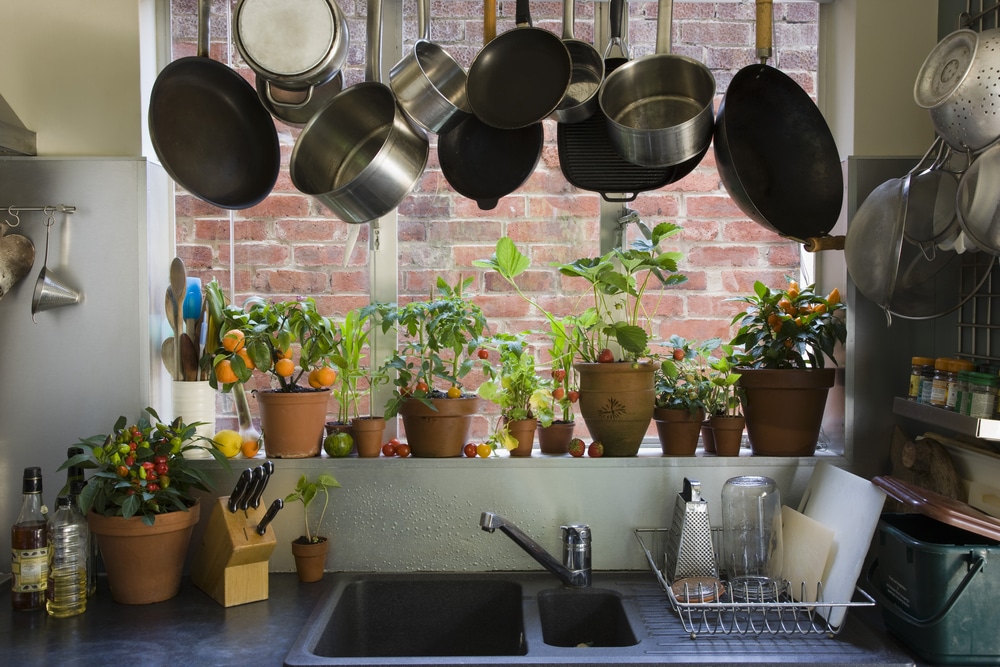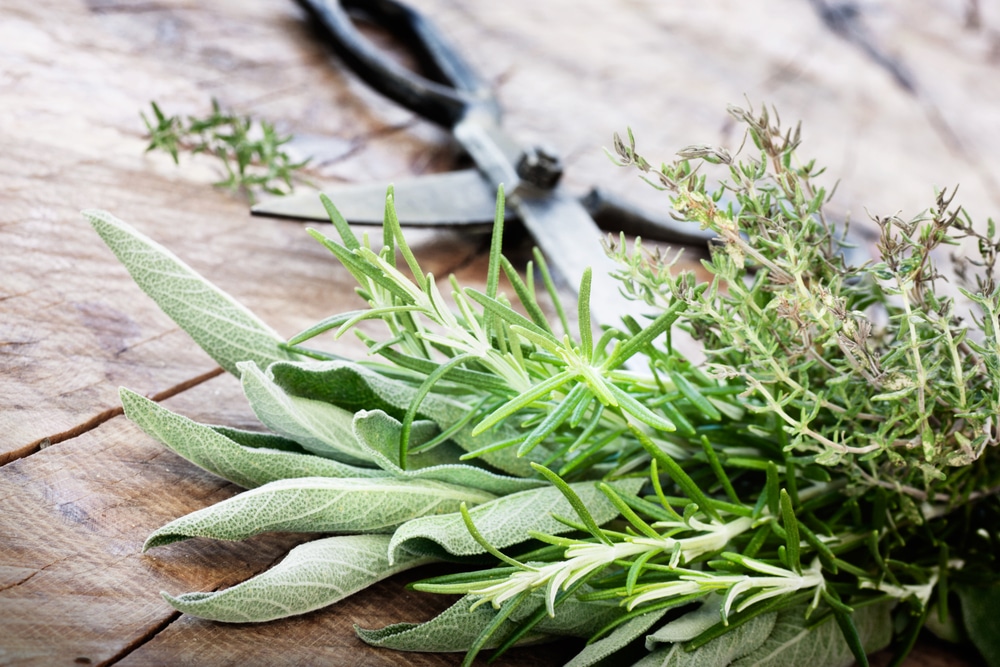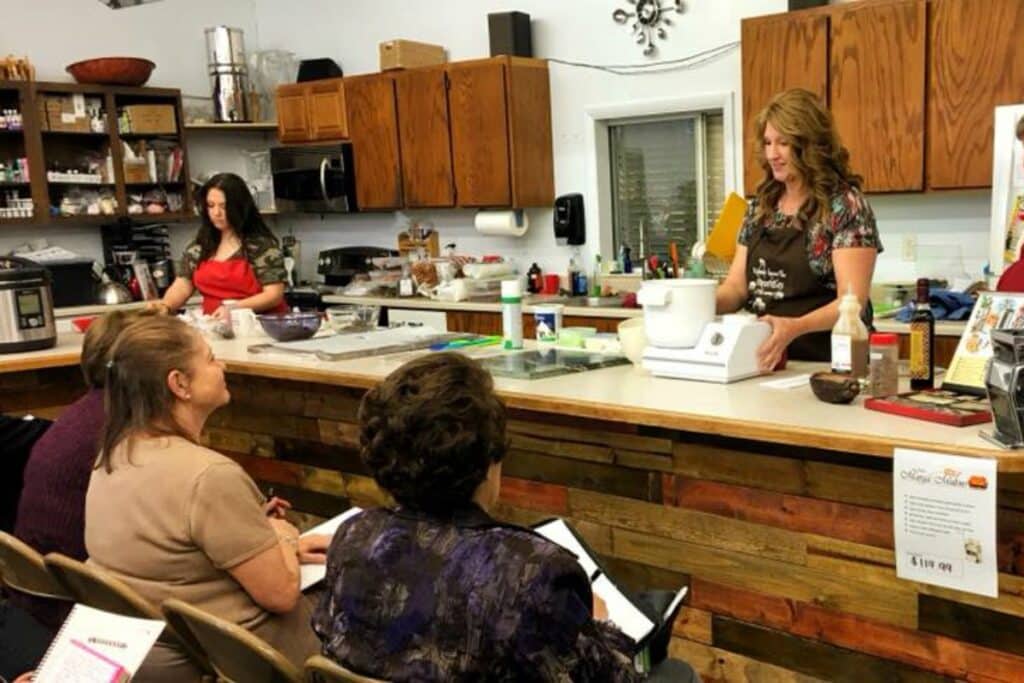
Why buy fruits, vegetables, tea leaves, or spices when you can just grow them yourself?
If you have the space for an extensive outdoor garden, you may lean into the homesteading lifestyle and try your hand at growing as many edible plants as possible. However, if you don’t have a yard or you simply want the convenience of being able to harvest plants in your kitchen itself, your options are more limited.
The edible plants you can grow in your kitchen vary, depending on the growing conditions and how much time and effort you’re willing to put into maintaining your little indoor garden. But even if you only have the time and space for one plant, there’s nothing quite so satisfying as knowing you grew that ingredient and you know everything that went into the process.
Here’s what you need to know about how the growing conditions in your kitchen affect the types of plants you can grow, edible plants you can grow in your kitchen, and how to care for indoor plants.
What Are The Growing Conditions In Your Kitchen?
Humans are a lot like plants in that we need sunlight in order to thrive, and the less light we get, the more prone we are to depression. However, some plants grow well in low-light conditions, while others demand plenty of sunlight.
Depending on how much light your kitchen gets, this impacts the edible plants you can grow. Bear in mind that you can always use supplemental lighting to create a high-light environment, if you’re willing to put in that effort.
Low-Light
If your kitchen doesn’t get much in the way of sunlight, opt for edible plants that love the shade. Thai basil is a great option here, as are sprouts.
Medium-Light
The more light you get, the more your options open up. If you have more sunlight, you can opt for plants like lettuce, rosemary, sage, green onions, and more.
High-Light
If your kitchen gets a lot of sunlight, you’re in luck! You can grow all sorts of edible plants in your kitchen without the need for artificial lighting. This includes peppers, kale, spinach, tomatoes, and even citrus trees.
Vegetables You Can Grow In Your Kitchen
Some vegetables you can harvest right from your window sill and use in your stew, while others you’d need a proper garden for. Generally, most root vegetables and squashes are best left outside. However, there are still plenty of vegetables you can grow inside, such as:
- Green onions
- Peppers
- Lettuce
- Kale
- Spinach
- Peppers
- Microgreens
- Radishes
- Tomatoes (technically, a fruit, but everyone thinks of them like a vegetable)
- And more!
Fruits You Can Grow In Your Kitchen
Want to make some fruit tarts in the winter or squeeze your own lemonade? Depending on the growing conditions in your kitchen, there are a variety of fruits you can grow.
- Lemons
- Oranges
- Goji berries
- Avocadoes
- Strawberries
- Figs
- Apricots
- And more!
In time, you could even grow pineapples indoors! You can also grow bananas and other types of fruits, but you need to be careful with these, as they need care to both flourish and produce something edible.

Herbs You Can Grow In Your Kitchen
Herbs and spices are often the finishing touches to dishes that bring them together and complete them. Without proper seasoning, things can often taste bland. Why reach for your spice cabinet when you can grow some of them yourself, though?
- Mint
- Parsley
- Rosemary
- Basil
- Dill
- Oregano
- Cilantro
- Sage
- Thyme
Teas You Can Grow In Your Kitchen
While we’re on the subject of edible plants you can grow in your kitchen, have you given any thought to cultivating your own indoor tea garden? If you’re an avid tea drinker, there could be nothing better than the freshest possible tea leaves!
- Chamomile
- Peppermint
- Lavender
- Lemon balm
- Stevia
- And many more
Many herbs can be used in teas, as can many flowers, like roses. In most cases, all you need to do is dry the leaves for tea.
How To Care For Indoor Plants
Now, here is where it’s best for you to consult with your community and gardening experts. Every plant needs something different, and depending on the growing conditions in your kitchen, your plants may need care that the same plant in a different environment might not need.
Generally speaking, though, you want to ensure that there’s enough light and air movement. You want to water enough, but not too much. You want to ensure that the pots have good drainage. In order to obtain the best yield, harvest regularly.
To learn more about caring for edible plants you can grow in your kitchen, you can attend indoor gardening classes in your area or online, as well as ask around your community and local greenhouses.
Are You Looking For Cooking Advice?

Kitchen Kneads provides all sorts of ingredients and gadgets to help you on your cooking journey. If you’re looking for advice on what to do with the edible plants you can grow in your kitchen, you may enjoy attending one of our cooking classes. Our cooking classes cover all sorts of different topics from cookie decorating to bread baking to food storage and more.
Contact us today to learn more about our products and cooking classes.











Leave a Reply